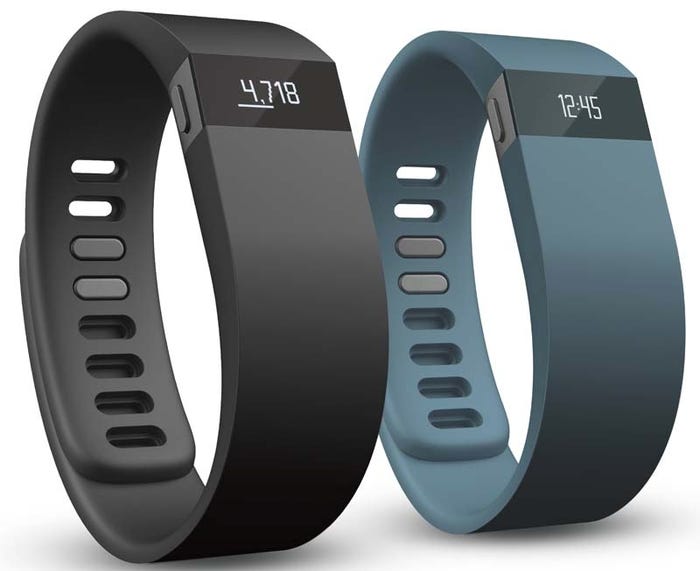After FitBit recalled a million wearable devices, suppliers are certifying materials to skin-contact standards
Research firm IHS expects annual shipments of all types of wearable electronic devices to reach 56 million units by 2018. In fact, it expects the global market for just the batteries that go into wearable electronics to grow tenfold in four years.
July 1, 2014
Research firm IHS expects annual shipments of all types of wearable electronic devices to reach 56 million units by 2018. In fact, it expects the global market for just the batteries that go into wearable electronics to grow tenfold in four years.
"The tremendous expansion in store will come thanks to an increase in the shipments of smartwatch products, wearable health monitoring devices and smart glasses—products geared toward an active lifestyle combining advanced technological trends in miniature computing with newly smart consumer imperatives in fitness and fashion," said Thomas McAlpine, power supply and storage component analyst for HIS. One aspect of these devices that will require scrutiny is the material they're made of. The concept of "wearable" implies contact with the user's skin—long-term contact, often during rigorous activity. Materials used in such devices need to be non-irritating to skin.
 Look at FitBit, maker of Force wristbands, which were intended to stay on the user's wrist 24/7 to track sleep and activity. The company sold more than a million wristbands from October 2013 to February 2014. But the complaints started coming in: 9,900 reports of the wristband causing skin irritation and around 250 reports of blistering.
Look at FitBit, maker of Force wristbands, which were intended to stay on the user's wrist 24/7 to track sleep and activity. The company sold more than a million wristbands from October 2013 to February 2014. But the complaints started coming in: 9,900 reports of the wristband causing skin irritation and around 250 reports of blistering.
By mid-March the Force was recalled and FitBit was giving buyers a full refund. The recall page on the Consumer Product Safety Commission web site reported that: "Users can develop allergic reactions to the stainless steel casing, materials used in the strap, or adhesives used to assemble the product, resulting in redness, rashes or blistering where the skin has been in contact with the tracker."
That notice didn't quite pinpoint the culprit, but the recall is certain to inspire extra care among players in the wearables market when they specify skin-contact materials. Plastics suppliers have already seen the need, and are responding by developing and certifying materials for wearables. One is PolyOne GLS Thermoplastic Elastomers, a supplier of thermoplastic elastomer (TPE) materials, which announced that its Versaflex CE 3620 material meets all ISO 10993-10:2010 testing requirements with no signs of irritation.
Charles Page, director, global marketing for PolyOne, said this compliance helps give wearable device makers a competitive edge, "by indicating that their products are made with materials tested and approved for skin sensitivity." He added that the compliance can help device makers accelerate their product development cycle. The supplier said that several Versaflex CE materials have been used in wearable electronics applications without causing user skin irritation for a number of years. Key performance characteristics of the TPEs: haptics, such as a silky smooth feel; strong chemical and UV light resistance for long durability; and vibration-damping qualities to enhance device performance and user comfort.
About the Author(s)
You May Also Like


